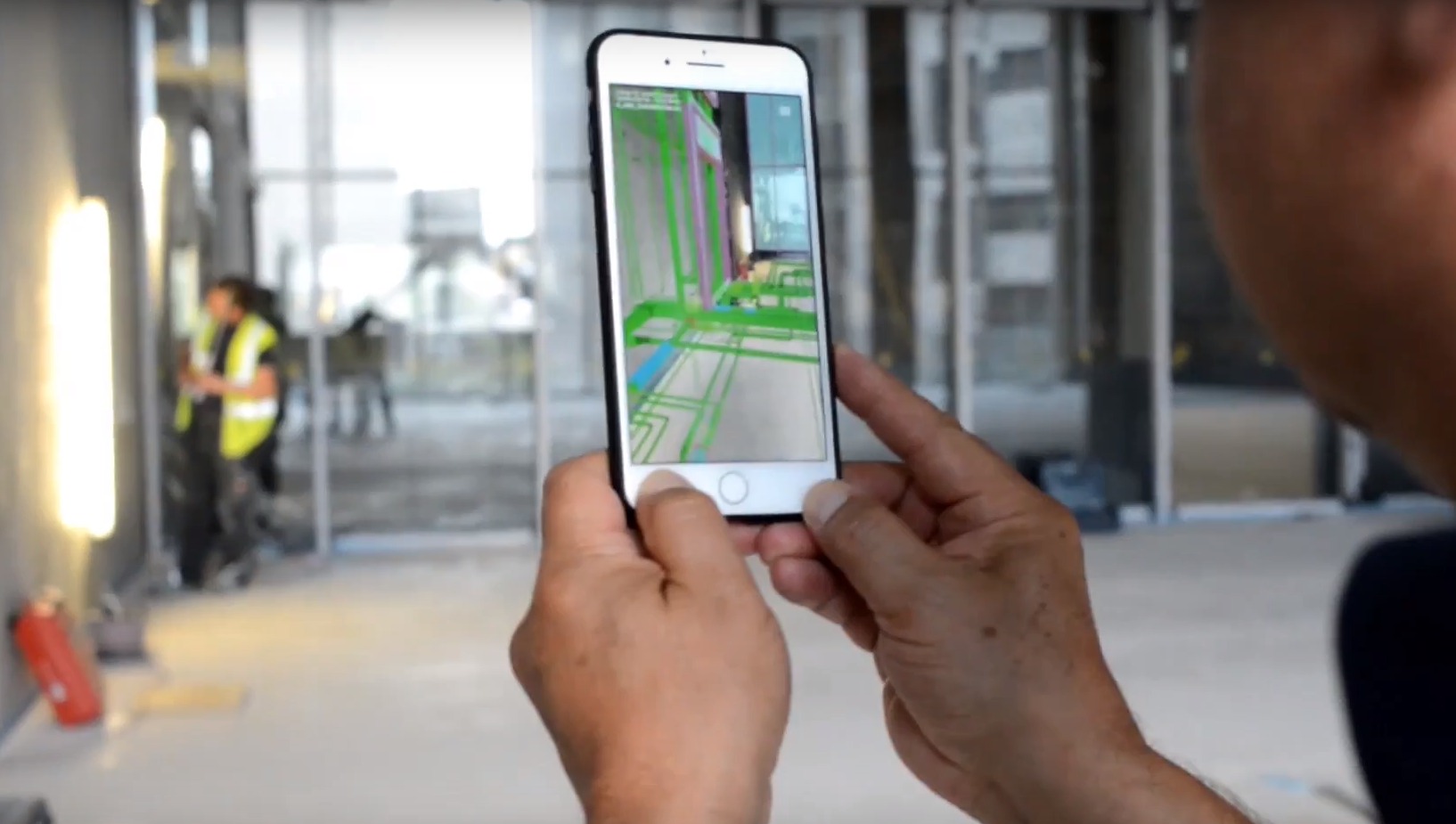A technological innovation seems to be revolutionizing one of the oldest professions in the world. Augmented reality (AR) has just arrived and is already transforming the way in which architecture and construction have been developing in recent centuries, benefiting engineers, designers, architects, project managers, service providers, and all over the world.
Unlike virtual reality, which creates a whole new environment independent of the real world, augmented reality includes virtual elements that interact with what already exists. Thus, it is possible to unite virtual architectural projects with the reality of the land where it is built, increasing its efficiency and precision, reducing errors and saving time, money and resources.
We know that the works are usually chaotic, noisy and dirty spaces. Although the adoption of the BIM system reduces a large part of the incompatibilities and unpleasant surprises during the construction process, it is inevitable that doubts will arise and errors will occur during the work. And, more importantly, each mistake costs money and time.
The idea is that augmented reality technology can provide a more accurate view of what will be built, as well as all the layers of materials and facilities, usually difficult to understand through drawings. For this, 3D plants and even virtual model holograms are used, improving the understanding of the project and facilitating the execution of the different processes. During construction, the ability to see through walls and understand the path of the facility facilitates the process and reduces the possibility of errors, and can even guide the construction of complex geometries.
For all this requires a device, usually glasses. Currently there are several manufacturing companies, but the most used in civil construction is Microsoft HoloLens. One of the big reasons that builders choose the Microsoft HoloLens is the price and its certification as protective glasses. The DAQRI company developed a safety helmet integrated into the glasses, to further facilitate the use by civil construction professionals.
One of the areas that will benefit the most from augmented reality is that of inspection and works management. We select some augmented reality technologies that can revolutionize the way we approach the civil construction industry.
Morpholio AR Sketchwalk
AR Sketchwalk is a tool that allows us to immerse ourselves in our own sketches, giving our clients and ourselves a more real notion of the designed space. Through an iPad, we must position the design in the plane (it can be the real terrain of the project) to cover it, and we can even extrude its walls to get a better idea of the spaces. This greatly enhances the experience of presenting a project, making it much more interactive and clear to clients.
DAQRI Smart Helmet
DAQRI Smart Helmet is a helmet that allows you to visualize projects and 3D models in augmented reality, experiencing it as an immersive and large-scale 3D environment. Teams can compare work in progress with the original design and synchronize work and office work through a fully digital workflow.
Measurement applications for IOS and Android
Today, in addition to AR Measure, there are some applications available for the architecture and construction purpose. IOS 12, for example, already comes with a measurement app installed. Using augmented reality, these applications work as digital rules, calculating distances in real spaces through the camera of your cell phone or tablet. With them, you can measure objects and also draw the plants of a real space. AirMeasure and MeasureKit are some of the most used applications.
Augment
Augment is an application that allows users to view 3D models in real time and at the correct scale, transforming a plant into a 3D model hologram, or simulating life-size products. The platform is available for smartphones and tablets and is used by designers and marketing teams, reducing prototyping costs and increasing its attractiveness to customers.
Fologram
Fologram transforms 3D models into life-size building instructions, using augmented architecture and construction glasses called Hololens. The program seeks to facilitate the construction of complex projects, which require a series of measurements, verification and specific care, through digital instructions that are virtually superimposed in the workspace, simulating a step-by-step guide for bricklayers during the construction process.
It is undeniable that in the future humans will increasingly depend on augmented reality.



